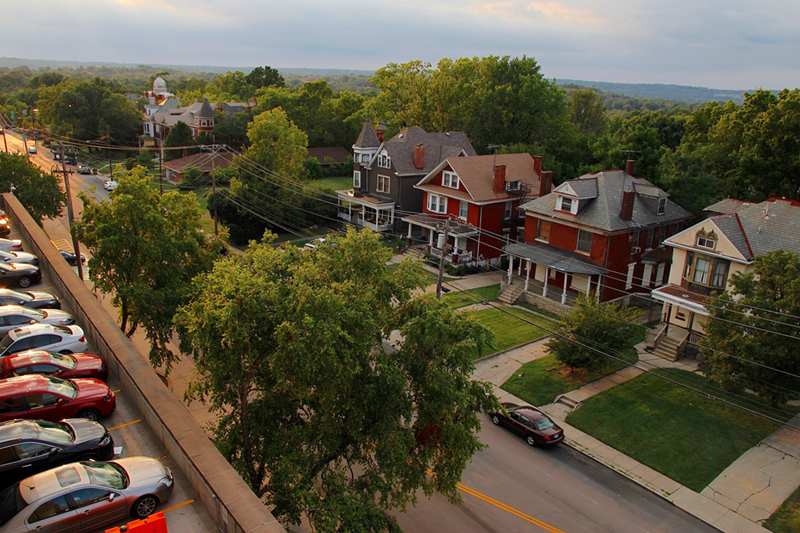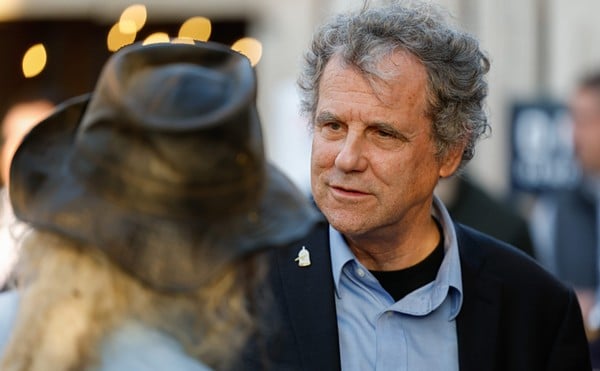
After facing a procession of neighborhood opponents, Cincinnati City Council voted 6-3 this morning to remove final obstacles for a hospital expansion that would serve hundreds of young patients and represent the city’s biggest development deal since the turn of the millennium.
But not everyone loves a $550-$650 million plan by Cincinnati Children’s Hospital to add a 625,000-square-foot patient tower, 1,100-car parking garage addition and helipad to its Avondale campus.
The plan requires the demolition of single-family homes and the relocation of several families as well as the rerouting of Erkenbrecher Avenue, and has awakened old tensions in the predominantly black, low-income neighborhood from residents fatigued by the growth of large institutions there.
Children’s says it has been working on the plan for years engaging residents, and Cincinnati’s Planning Commission gave its unanimous approval in June. But, even then, there were rumblings that some in Avondale weren’t happy with the idea. A group of those long-term residents spoke to Council today before its vote.
Sheila Holmes Howard owns a home on Rockdale Ave., just north of the proposed expansion. She's also the secretary of the Avondale Community Council and runs The Avondale Avenue Block Club encompassing the area set to be demolished.
“We were a thriving block club," she says. "But due to a lack of residents, who have moved out, we are just sustaining ourselves. I think the Avondale community understands the expansion plan. But I believe they can come up with a better plan. We need to have empathy and compassion for the remaining residents in the Avenue district.”
Representatives from Children’s say they’ve made a half-dozen outreach efforts and that there simply is not another way to respond to the booming need for their services. Children’s CEO Michael Fisher says the hospital serves more than 21,000 families and children a year, 3,000 of them from Uptown neighborhoods like Avondale. Hospital leadership says the new facility will serve emergency patients and that quick access to existing facilities is critical.
“As we planned this major investment,” Fisher says, “we had dozens and dozens of physicians, nurses, support staff, parents, patients and industry advisors who provided thoughtful input and helped us to conclude that this project and location and its proximity and connectivity to our existing facilities are essential if we want to meet the needs of critically ill children. Yet, we appreciate the concerns by our neighbors and fellow citizens, especially in Avondale. We will work hard to minimize these issues.”
Avondale Community Council opposes the plan, saying Children’s didn’t do enough to engage residents in the planning process and that the large parking garage and increased volume of patients will draw much more traffic to the neighborhood. The council also protests the demolition of the houses along Erkenbrecher, saying residents who sold them were pressured or misled into letting the hospital buy them.
“The residents are turning to you to right the scales of injustice in this project by an institution that has up to this point has invested very little in Avondale," Milton said before Council's vote. "It seems only that the size of the budget in this project is important to the mayor and most members of Council.”
Milton says the plan disrupts a plan drawn up by residents for Burnet Ave. corridor made two years ago. “Why are community councils spending tens of thousands of dollars on these plans when they’re not recognized,” she asked. “That kind of back backdoor eminent domain should not be allowed.”
Councilmembers supporting the expansion pushed back at that characterization and cited other residents who want the expansion.
"No one forced anyone to sell their homes," Councilman Kevin Flynn said today before Council's vote, pointing out that homeowners got fair market value for their housing. Flynn cited an e-mail blast by Dwight Tillery's Closing the Health Gap and wondered aloud if the nonprofit may have stirred up much of the opposition to the plan. "Children's needs this expansion."
Hillary Wagner is one of the hospital’s patients who came to City Council last week to support the expansion. In 2015, Wagner’s newborn daughter was diagnosed with a rare liver disorder that eventually required her to donate a piece of her liver to her child. Wagner turned to Children’s for the procedure, recovery and continuing treatment. She said the service at the hospital’s Avondale campus was excellent but that the facilities there were cramped and less than ideal.
“We have the best doctors in the world at Cincinnati Children’s,” Wagner said. “I know that first hand. It’s time we give the care team and their patients the state-of-the-art space and safety they so desperately need.”
But that expansion comes in a neighborhood that has seen alternating waves of disinvestment and rapid expansion of large, powerful institutions. Children’s, which takes in more than $2 billion in revenue a year, has bought up more than 100 homes in recent years ahead of the expansion, and, just west, the Cincinnati Zoo has also purchased and demolished other housing for its own expansions.
Avondale's population of 12,500 is 90 percent black and has seen its median household income of about $20,000 lag well behind Cincinnati's median income of $34,000. Life expectancy there — an area with two major hospitals — is twenty years less than the citywide average. That's mostly due to widespread disinvestment dating back to the 1960s after a large influx of black residents moved to Avondale following the demolition of much of the West End.
But even as jobs and economic opportunities have remained scarce for many black residents there, Children’s campus has gotten bigger.
Trina Carter remembers living in apartments near the corner of Erkenbrecher and Burnet avenues from the 1970s until the mid-1990s, when her family moved after the building was sold and subsequently demolished. At the time, Children’s was working up to another large project — the construction of so-called “Location A,” a 447,000-square-foot patient tower there. That project started in 1998 and wrapped up in 2002.
By that time, the hospital was operating more than 3.5 million square feet of building space, up from just 600,000 square feet in 1982. That total has continued to grow.
“I loved it there,” Carter says of her apartment. “A lot of families lived there who we knew really well. It was a bummer to have to move.”
Carter says her family briefly moved a little farther up Burnet to a rental house before that property was also demolished. After that, most of the family left Avondale. Carter’s aunt stayed behind before finally folding in 2015 to pressure to sell the house she owned near Burnet and Erkenbrecher, caddy-corner to Children’s.
The Carters aren't the only long-term residents who have felt the pressure. Michael Elsworth and his wife Lea has lived near Erkenbrecher for more than forty years.
“Based on this zone change, residents will have to change their daily routine," he says. "Since 1979, we’ve been affected by expansion of at least three major institutions — Children’s, UC Medical Center and the Cincinnati Zoo. IF these institutions did at least half of what they’d said they’d do, Avondale wouldn’t be one of the poorest neighborhoods in the city. By ignoring our reasons for oppositions that are true and legitimate.”
By this week, the only thing standing in the way of breaking ground on Children’s massive new project was City Council approval of city zoning code variances and the sale of right-of-way of city-owned land. Contractors for Children's had already established construction site offices preparing for the expansion work, and many houses along Erkenbrecher and other nearby streets were boarded up.
Council removed those last hurdles with its vote today. It's the second time this year that the city has given the green light to a major development opposed by predominant community groups in a neighborhood. In May, Council approved the sale of city-owned alleys for a development at Liberty and Elm streets in Over-the-Rhine despite staunch, if not unanimous, opposition from the neighborhood’s community council and other prominent groups.
Not everyone on Council was sold on Children’s plan, however.
“This will impact Avondale for decades,” Councilwoman Yvette Simpson said during an Aug. 7 neighborhoods committee meeting aimed at moving to a full Council vote legislation approving a zoning change. “I want to support this development, but I’m not willing to do it at the cost of the residents.”
She’s not the only one. Councilman Wendell Young is also against the zoning change as it’s been presented to Council. Simpson and Young submitted a counter-proposal: Children’s must invest five percent of the value of the tower development — about $27.5 to $32 million — into Avondale over the next decade. That’s more than the $11.5 million Children’s is investing in the neighborhood to improve housing there, but less than a $100 million investment the Avondale Community Council once asked for, according to an Avondale Community Council powerpoint about the plan.
The Simpson/Young proposal also called for a commitment from the hospital to improve health outcomes in the neighborhood by 10 percent over the next decade and for the city to reinvest back into Avondale the $562,000 it would gain from selling the right of way on Erkenbrecher.
Children's CEO Fisher fired off an angry letter to Council yesterday decrying that proposal while detailing the hospital's investments in the neighborhood and community engagement efforts.
"We have been and will continue to be a good neighbor, partner and corporate citizen,” Fisher said in that letter. “Cincinnati Children’s has not requested and is not receiving any city financial support on this project. The motion was not raised in any previous session, came as a complete surprise, is highly disappointing and is not acceptable.”
Children’s zoning request faced gridlock in Council over the last two weeks after three council members who oppose the deal — Simpson and Young as well as Charlie Winburn — were absent from multiple committee and Council meetings. Simpson’s longtime partner experienced a severe medical emergency, and Winburn suffered from eye problems that required the attention of an optometrist. Young says he had personal matters that required him to drive out of town during the days the meetings took place, but he was in the city in the evenings. Critics say Young skipped the meetings to avoid a vote — a charge he denies.
All council members were present at a committee meeting Aug. 7 but couldn’t agree on a way forward on the project. Two members of the neighborhoods committee, David Mann and Kevin Flynn, balked at Simpson and Young’s Aug. 7 proposal.
Mann and Flynn, as well as other supporters like Mayor John Cranley, say Children’s has done plenty for Avondale.
“I don’t think it’s fair for Children’s Hospital to be responsible for all things that challenge our neighborhoods,” Mann said.
But Young said that analysis overlooks key factors.
"We're talking about a neighborhood you're going to put a big box in and say you're a neighbor," he said. "The issue is one we continue to overlook. It’s an issue of place. It’s an issue of being able to belong." ©
This article has been updated to reflect the current revenue of Children's Hospital.





